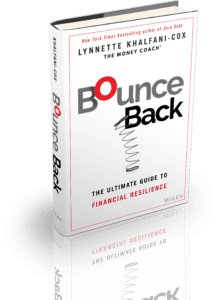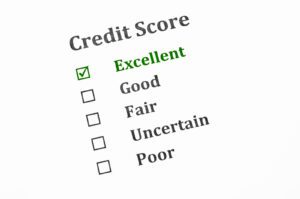Contrary to popular belief, Medicare is not free. This surprises many people because they’ve worked their entire lives and paid the necessary taxes, but Medicare still has costs. Sometimes, these costs can be overwhelming, and low-income individuals struggle to afford the coverage they need.
Fortunately, there is a Medicare Savings program that can help support those who need financial assistance.
Frequently Asked Questions
What is the Medicare Savings Program?
The Medicare Savings Program (MSP) helps low-income individuals pay for Medicare costs including monthly premiums, deductibles, copayments, and coinsurance, which can add up quickly in some cases.
Other plans, like Medicare Supplement plans, can also be helpful. To learn more visit Boomer Benefits.
The MSP program has four different levels, each with varying levels of assistance. Each level has various qualifications, and the state someone lives in can also affect program requirements.
Qualified Medicare Beneficiary (QMB)
The Qualified Medicare Beneficiary program (QMB) offers the most extensive assistance out of the four levels. It covers the Medicare Part A and Part B premiums and deductibles, copayments, and coinsurance for Medicare-approved services.
Specified Low-Income Medicare Beneficiary (SLMB)
The Specified Low-Income Medicare Beneficiary (SLMB) program is the next level in the MSP. It covers the Part B premium but not the Part A premium or other costs like deductibles, copayments, or coinsurance.
Qualified Individual (QI)
The Qualified Individual (QI) program is similar to the SLMB program in that it also only covers the Part B premium. The difference between the QI and SLMB programs is that the QI program has a higher income limit. People also have to apply for the QI program each year on a first-come, first-served basis.
Qualified Disabled & Working Individual (QDWI) Program
Last is the Qualified Disabled and Working Individual (QDWI) program. This program only covers the Part A premium, so it offers the least amount of assistance.
Who Qualifies for the Medicare Savings Program?
To qualify for an MSP, people should be within the monthly income and resources limit set for that program. Each program includes different limits for individuals and married couples, which can change from year to year.
The state someone lives in can also affect their eligibility. For example, Alaska and Hawaii have higher income limits than the ones listed below. Other states may use different factors to determine eligibility, such as Social Security Disability Insurance status, kidney failure, age, and more. Because of this, people should verify with their state’s program to know what to expect.
Below is an overview of income and resource limits for each MSP.
Qualified Medicare Beneficiary (QMB) Eligibility
In 2024, the monthly income limit for individuals is $1,715, and for married couples, it is $2,320. The limit for resources is $9,430 for an individual and $14,130 for married couples.
Specified Low-Income Medicare Beneficiary (SLMB) Eligibility
For the SLMB program, individuals have an income limit of $1,526, while married couples have a limit of $2,064. The resource limits are the same as the QMB program.
This program also requires people to have both Part A and Part B as well to be eligible.
Qualified Individual (QI) Eligibility
Under the QI program, the monthly income limit for individuals is $1,715, and for married couples, it is $2,320. The resource limits are the same as those under the QMB program.
Like the SLMB program, the QI program requires Part A and Part B to qualify. However, people who qualify for Medicaid are not eligible for it.
Qualified Disabled & Working Individual (QDWI) Program Eligibility
The QDWI program has the highest income limits, with the individual amount being $5,105 and the married amount being $6,899. This program also has different resource limits. The resource limit is $4,000 for individuals, while the limit for married couples is $6,000.
Unlike the other programs, the QDWI program doesn’t require people to have Part A or Part B.
Medicaid and the Medicare Savings Program
Many people confuse Medicaid and MSPs. Although they are related, they are not the same thing. Medicaid is a state-run financial assistance program that helps low-income people pay for medical care according to federal guidelines.
MSPs, on the other hand, are a subset of Medicaid, helping people cover Medicare costs like premiums, copayments, coinsurance, and medication costs.
How to Apply for a Medicare Savings Program
Since MSPs fall under Medicaid, people should visit their state’s Medicaid website for more information on the application process. Keep in mind that each state may call their MSP program something slightly different. For example, Nevada refers to its MSP as the Nevada Medicare Assistance Program.
To apply, people need to provide documentation proving their financial status. This may include documentation relating to Social Security, citizenship or immigration status, income, bills, and more. The exact application process may look different from state to state.
Keep in mind that people must apply for the QI program each year.
Medicare Extra Help
Medicare also has a program called “Extra Help.” The Extra Help program helps cover people’s medication costs. There are different ways to qualify for Extra Help, but those who qualify for the QMB, SLMB, and QI programs automatically receive Extra Help. If someone does not automatically qualify for Extra Help, they can still apply for the program to see if they can receive some assistance for their medication costs.
Those who qualify for Extra Help should pay no more than $11.20 for medications their Medicare drug plan covers.
Summary
Medicare Savings Programs stand as an essential lifeline for many individuals struggling to afford their healthcare costs. By covering Medicare premiums, deductibles, and other out-of-pocket expenses, MSPs can provide significant financial relief and ensure greater access to necessary medical services for eligible beneficiaries.
Understanding the different MSP categories, eligibility requirements, and the application process is essential for those who may benefit from this assistance. With additional support resources available, such as Extra Help for prescription drug coverage, navigating the complexities of Medicare can become more manageable.
People who think they may be eligible for one of the programs should contact their state’s Medicaid office for further information, as the enrollment process and program requirements vary from state to state.
Frequently Asked Questions
What does the Medicare Savings Program actually cover?
The Medicare Savings Program (MSP) helps pay for key Medicare costs such as monthly premiums, deductibles, copayments, and coinsurance. Depending on the level—QMB, SLMB, QI, or QDWI—coverage may include all or part of Medicare Part A and Part B expenses. These programs are beneficial for people with limited income and resources who struggle to manage Medicare costs.
Who qualifies for the Medicare Savings Program?
To qualify for a Medicare Savings Program, individuals must meet specific income and resource limits, which vary by program and by state. For example, in 2024, QMB eligibility requires a monthly income of no more than $1,715 for individuals or $2,320 for couples. Medicaid offices in each state may apply different rules, so it’s essential to check local eligibility guidelines.
How is the Medicare Savings Program different from Medicaid?
Although both programs offer financial help for healthcare, MSPs are a subset of Medicaid. Medicaid is a broader, state-run program that helps with general healthcare costs for low-income individuals. The Medicare Savings Program focuses specifically on helping people pay for Medicare-related costs, such as Part B premiums and out-of-pocket expenses.
Does qualifying for a Medicare Savings Program also mean I get Extra Help?
Yes. If you qualify for the QMB, SLMB, or QI program, you are automatically enrolled in the Medicare Extra Help program. Extra Help assists with prescription drug costs, reducing out-of-pocket expenses and capping costs for covered medications at no more than $11.20 per prescription.
How do I apply for the Medicare Savings Program in my state?
To apply for a Medicare Savings Program, visit your state’s Medicaid office or website. You’ll need to provide documentation of your income, Social Security benefits, bills, and citizenship or immigration status. Remember that eligibility and application requirements vary by state. For example, Nevada refers to its program as the Nevada Medicare Assistance Program.
Disclaimer:
The information provided in this article is for educational purposes only and should not be considered financial, legal, or medical advice. While we strive to ensure accuracy, Medicare programs, eligibility criteria, and benefits may vary by state and are subject to change. Always consult with a qualified financial advisor, attorney, or licensed Medicare specialist before making decisions regarding your healthcare coverage or applying for assistance programs. We are not affiliated with any government agency and do not provide official Medicare or Medicaid services.










